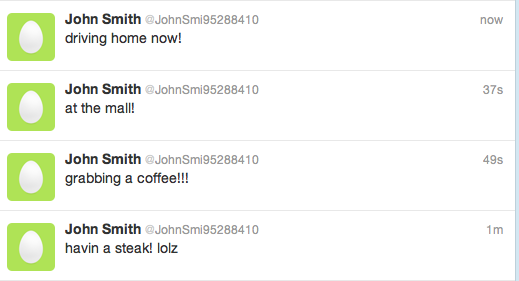
Average Twitter users only find 35 per cent of the tweets they come across to be “worth reading,” according to a recent study.
Otherwise, the majority of content on Twitter was deemed uninteresting at best and irritating at worst.
To collect the data, the researchers designed a website called Who Gives a Tweet, which allowed users to rate tweets. If a user rated at least 10 random tweets, they would receive anonymous feedback about their own tweets.
“We used people’s curiousness about how others rate them as an initial incentive for them to sign up,” said Paul André, the lead author of the study, in an email.
The website went viral, collecting 43,000 tweet ratings in just under 20 days, André said.
The rated tweets were then divided into categories. Users liked “information sharing tweets, questions to followers, and self-promoting tweets” the most, the study found. Presence maintenance tweets like “Grabbing a coffee! LOL” and conversation tweets between users were the least liked.
“Tweets almost have to be about things that everyone has a general awareness of,” said Francis Pallotta, a Twitter account holder since May of last year.
Pallotta said it’s most annoying when users get into a back and forth and start flooding the feed.
“That’s not what Twitter is for,” he said.
Then why don’t users just un-follow those who tweet unnecessary information? It’s not that easy, said third-year political science student Luke Sullivan.
“People have that need for acceptance. They follow their friends so they can get more followers themselves,” he said.
Even if they have no interest in what the other person is tweeting, “they’re too afraid to unfollow them because they’re worried about what the other person might think,” Sullivan continued.
This “I follow you, if you follow me” mentality carries a sense of social obligation, André said.
“The content isn’t so much the main focus as generally being aware of someone,” he said. “It’s the equivalent of waving hello to someone in the hallway.”
Madeleine Atack, a third-year psychology student, said she started following certain celebrities because “it’s interesting to see what they’re up to.”
Kim Kardashian’s 13 million followers would probably agree with her. In fact, people who follow celebrities are so interested that they will only begin to consider un-following when celebrities begin clogging the home feed with ‘twitpics’ of themselves every 30 seconds, according to Atack.
Sullivan said he doesn’t mind going through the unwanted tweets to get to the moderate percentage that’s funny or new. In 140 characters and a split second, a tweet will either catch your attention or it won’t, he said.
Pallotta said Twitter is a place for sharing information and “a place to get news right from the source.”
While there might be ways to concentrate the useful information, there’s no way to filter out the pointless messages. André compared it to face-to-face conversations.
“Not every sentence is going to be funny or informative,” he said.
While other social media platforms such as Facebook use the layout to determine what kind of content to emphasize, Twitter is much simpler. On Facebook, users are set up to linger on someone’s wall, click through their pictures and dissect their posts. On Twitter, a tweet could be gone as soon as you read it, quickly taken over by the mass of information rolling through the home feed.
André said the study could be used to develop filters and isolate useful content. But he said he thinks it’s more likely it will serve another purpose.
“Perhaps we are better off educating people on what is liked or disliked and leave the content up to the users.”





